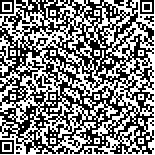| 摘要: |
| 随着科技的发展,眼动追踪技术在
景观领域的应用逐渐增多,为景观视觉评价
提供了更为客观的评估手段。首先,本文利
用CiteSpace可视化图谱分析工具,基于Web
of Science数据库的127篇文献和中国知网88
篇期刊文章,对景观领域中眼动研究的现状
和趋势进行了可视化定量分析并辅助定性分
析。总结研究发现:眼动追踪技术目前在景
观领域研究中主要应用于景观美学效应、实
用效应和复愈效应等方面。眼动研究的实验
设计尤为重要,实验结果和被试选择、实验
材料以及眼动指标的选择具有重要的关系;
为保证眼动追踪技术的科学性,还应进一步
推进眼动数据的提取、解释以及实验过程的
控制等方面的科学性和严谨性;与认知心理
学测试方法相结合,并加强与其他生理传感
器技术的配合,在景观领域进行多感官综合评价,有助于更好的探究和解释“人—空间—感知”之间的关系。 |
| 关键词: 眼动追踪 视觉评价 景观 感知 |
| DOI:10.13791/j.cnki.hsfwest.20210416 |
| 分类号: |
| 基金项目:辽宁省自然科学基金(20180550535);国家自然科学
基金(31470031) |
|
| A Review of Eye Tracking Researches in Landscape Architecture Field |
|
LIU Linghan,WU Meiyang,MA Yimeng,QU Haiyan
|
| Abstract: |
| With the development of technology, the application of eye tracking technology
in landscape research has gradually increased, which provides a more objective evaluation
method for landscape visual evaluation research. Eye tracking was mainly used in
advertising evaluation and reading research in the early stage. It has been gradually
introduced in design psychology, cartography, driving, multimedia courseware design,
geography and living environment in recent years. At present, researchers have applied
eye tracking to landscape visual assessment. By recording people’s observation of the
landscape environment objectively, the visual experience and cognitive process of human
eyes are quantified, so that the subjective feelings of evaluators can be objectively reflected
through eye movement indicators. Compared with the verbal reports of participants, eye
tracking technology is more objective, with the advantages of quantitative research and direct
evaluation. It is a powerful tool in landscape research. This paper purposes to summarize
and prospect the application, general application characteristics, limitations and trends of
eye tracking technology in landscape research on the basis of reviewing relevant research
literature.
This article uses the CiteSpace visual atlas analysis tool, based on 127 English literatures
from Web of Science database and 88 Chinese literatures from CNKI, to visualize and
quantitatively analyze the status and trends of eye movement research in the landscape,
assisted with qualitative analysis. To summarize the research findings: eye movement research
began in 2003, and such research in China has been started relatively late, with a large number
of studies focused between 2013 and 2020. In landscape research, eye tracking technology is
currently mainly used in the field of landscape aesthetics, practical effects and healing effects.
Researches on aesthetic effects mainly focus on building a subjective evaluation system of
landscape visual quality by combining eye movement with subjective evaluation, use eye
tracking technology to analyze the participants’ visual behavior and landscape quality, and
then infer the influence of the landscape space or its components on the landscape quality;
practical effects pursue the satisfaction of people’s needs for familiarity, viewing, and use
of scenery, and related research focuses on wayfinding, tourism resources and map use; the
healing effect focuses more on the adjustment of the individual’s physical and mental health,with eye tracking technology generally combined with questionnaires and scales to explore the relations between environmental components and
individual behavioral psychology.
This paper sorts out the existing eye movement research in the landscape field, and summarizes the general characteristics of eye movement
research in the landscape from three aspects: participants, experimental materials, and eye movement indicators. In eye movement research,
experimental design is particularly important. The results have an important relationship with the choice of participants, experimental materials
and eye movement indicators. Due to the complexity of the experiment, college students are usually selected as participants, and the number is
about 30. Experimental materials include static stimulus, dynamic stimulus and real environment. The three stimulus materials have their own
advantages and disadvantages. From the feasibility of current research and the systematic perspective of data interpretation, static stimulus
materials are the most widely used. Dozens of eye movement indicators have been used in various studies. Among them, commonly used eye
movement indicators include fixation indicators, saccade indicators, and pupil indicators.
At present, the application of eye tracking technology in landscape research still has certain limitations. In order to ensure the scientificity
of eye movement research, the scientific and rigorous aspects of eye movement data extraction, interpretation and experimental process control
should be further promoted. The base number and selection range of the participants should be expanded, making the samples diverse. Combining
with cognitive psychology testing methods, strengthening the coordination of eye movement and other physiological sensor technologies, and
conducting multi-sensory comprehensive evaluation in the landscape field will help to better explore and explain the relationship between
“human-space-perception”. The application of eye tracking technology to quantify and explore people’s in-depth perception of the landscape
environment, to enhance the credibility of landscape evaluation using objective data, and to improve the quality of the landscape, is bound
to get more attention and recognition in landscape design and optimization. Eye tracking will also become an irreplaceable method and tool
in landscape visual evaluation. It is believed that with the development of research, eye tracking technology will be more widely used in the
landscape field, and more in-depth and systematic research will be completed. |
| Key words: Eye Tracking Visual Evaluation Landscape Perception |


